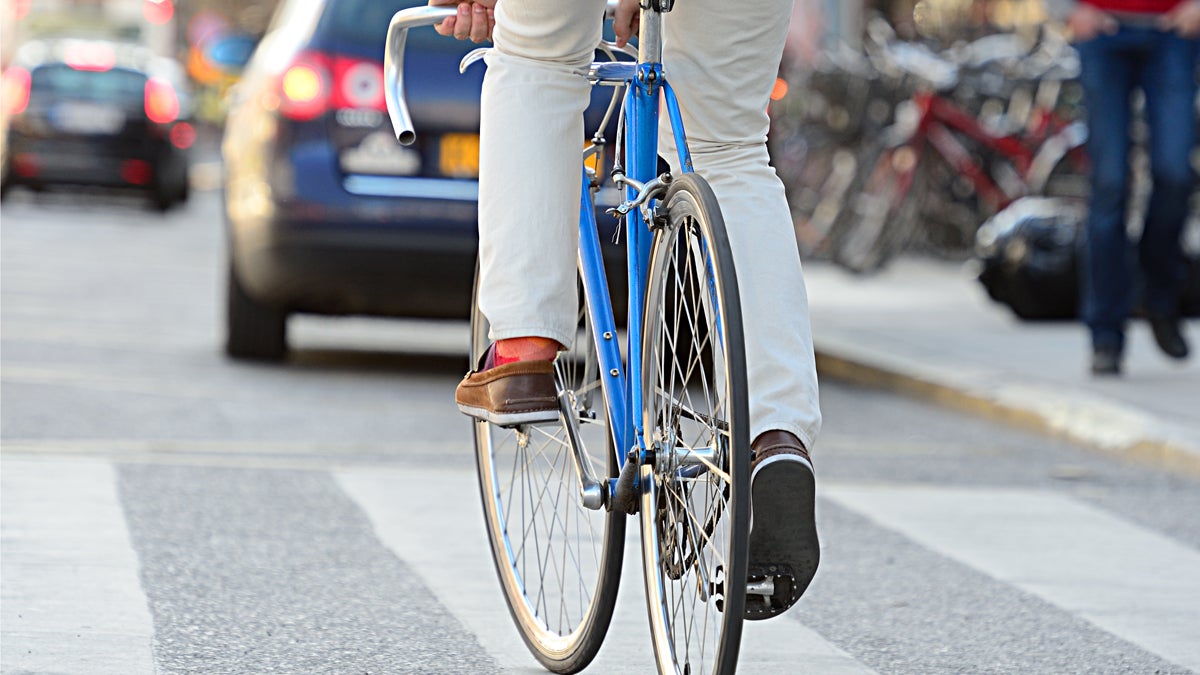Gathering to get Philly to zero bike and pedestrian deaths
 Photo via ShutterStock) " title="shutterstock_172885412" width="1" height="1"/>
Photo via ShutterStock) " title="shutterstock_172885412" width="1" height="1"/>
(Photo via ShutterStock)
Cities around the world have embraced a concept called Vision Zero and some Philadelphians want to join the movement.
Supporters say most traffic collisions are preventable and they want to reduce bike and pedestrian deaths to zero.
Bike enthusiasts and public health experts are gathering in Philadelphia Thursday to talk about how to make city streets safer.
Stanton Miller, a surgeon at Thomas Jefferson University Hospital, says lots of us could use a refresher course on basic traffic safety.
“I just don’t think that the proper kind of attention is paid to crosswalks that you see in the city of Philadelphia, versus if you’ve ever spent time in New England where crosswalks are basically sacred,” said Miller, founding director of the Jefferson Center for Injury Research and Prevention.
He said design changes could nudge people to pay more attention.
“Different colors, flashing lights at the beginning of cross walks, you can even have an audible reminding pedestrians and vehicle operators to stop at cross walks,” Miller said.
Scott Sauer, assistant general manager of system safety at SEPTA, will be speaking at the conference. He says Philadelphia’s public transit system is already testing new equipment that could help buses avoid pedestrians.
Strobe lights mounted on the front flash each time a driver makes a turn. Then there’s an announcement
“It will say: ‘Caution pedestrians, bus is turning,’ and on the inside it will say ‘Caution, watch for pedestrians.'”
Speakers at the Vision Zero conference are also set to discuss infrastructure, engineering and traffic enforcement changes to make biking and walking safer.
Sauer said operator training is part of the SEPTA’s push to reduce accidents by 2 percent each year. He says drivers are taught to check their mirrors frequently and to be “constantly scanning.” After complaints from bus drivers, the authority is replacing the left-side mirrors on its buses with a smaller version to block less of the driver’s view.
SEPTA has a fleet of 1,400 buses that cover about 1,400 miles each day.
The authority is making small improvements all the time Sauer said, and it wants to share the road with cyclists.
“We’d like to see them adhere to stop signs and red lights, our expectation is that we all follow the same rules of the road,” Sauer said.
Pedestrian and bike cycling is the No. 2 reason people are hospitalized in Jefferson’s trauma center, Miller said.
Part of the Vision Zero process is an analysis to identify high-risk spots around the city.
“North Broad Street and Roosevelt Boulevard are well documented streets where the injury rate and fatality rate is significantly high,” Miller said.
New York, San Francisco and Portland are among the cities that have adopted Vision Zero action plans. Since implementation in New York, there have been fewer traffic deaths and a jump in the number of speeding tickets issued.
WHYY is your source for fact-based, in-depth journalism and information. As a nonprofit organization, we rely on financial support from readers like you. Please give today.

